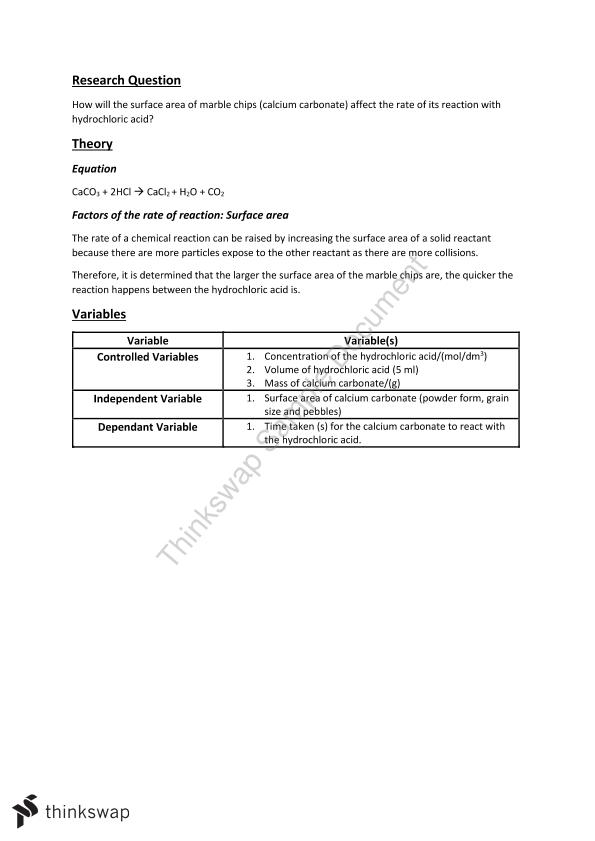Pour the acid into the conical flask and add the marble chips 5.
Marble chips and acid.
First you measure out 25cm3 of hydrochloric acid 2.
Measuring the rate of reaction at various times.
Calcium carbonates which are marble chips react with hydrochloric acid to give out calcium chloride water and carbon dioxide.
Secondly weight out 3 grams of marble chips for each concentration 3.
The reaction between sulfuric acid and calcium carbonate is somewhat similar to the reaction with sodium bicarbonate way carbon dioxide.
Dilute sulphuric acid is made to react with marble chips 2 see answers mahfoozfarhan4 mahfoozfarhan4 so when calcium carbonate reacts with sulphuric acid it forms water carbon dioxide and calcium sulphate.
Marble is calcium carbonate and thus behaves in the same hydrochloric acid calcium carbonate calcium chloride carbon dioxide water.
In the investigation i am going to find out how the surface area affects the rate of reaction by measuring the amount of gas produced and weight loss in a reaction between small large pieces of marble chips calcium carbonate and hydrochloric acid per minute.
Marble chips are mostly made up of calcium carbonate which is a alkaline compound.
Describe how you could investigate.
Investigating the rate of reaction between marble chips calcium carbonate and hydrochloric acid aim.
With the equation caco3 2hcl cacl2 h2o co2 hypotheses a reaction occurs when particles collide.
The rate of this reaction can be changed by changing the size of the marble chips.
This variable changes the rate of reaction by adding more acid in concentration than the water then the reaction will take place quicker because there is more acid to react with the marble chips and if you add more water then the reaction will take longer because there is less acid to react with the marble chips.
This process is based on random particle movement.
Marble chips react with dilute hydrochloric acid to produce carbon dioxide gas.

